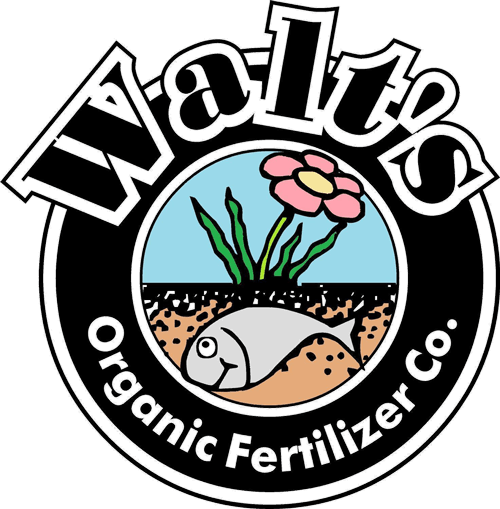
There is a lot more that could be written on this topic, but here are the quick and dirty differences between calcium sources for your soil.
Agricultural Lime: Calcium carbonate – CaC03 Pure calcium carbonate is used to help prevent the spread of various diseases, such as powdery mildew, black spot, and blossom end rot. Other benefits of calcium include, protection from heat stress, increases metabolic functions in plant cells, leading to a greater intake of other nutrients such as nitrogen and phosphorus. Additionally it helps to increase general cell wall structure. Adding Ag. Lime to your soil will also raise your PH making it more alkaline.
Dolomite: Dolomitic Lime contains calcium carbonate, bringing benefits similar to Ag Lime, while also providing magnesium which is important for plants’ utilization of nitrogen, phosphorus and sulfur. Having an excess of magnesium in your soil can cause a break down in soil structure, resulting in hard compact soils.
Gypsum: Calcium sulfate, or Sulfate of Lime – CaS042H20, due to its sulfur content Gypsum does not raise the soil PH like lime, and there is some debate as to whether it lowers soil PH. Gypsum helps liberate potash for plant use. Gypsum can also help break up compact and clay filled soils by correcting excess amounts of magnesium in your soil.
Oyster Shell Flour: in addition to a large percentage of calcium carbonate, Oyster shell flour contains about 1-% phosphoric acid, which makes oyster shell flour a source of both lime (calcium) and phosphorus. Oyster shell will also slightly raise your soils PH over time. Variable particle size provides both immediate and long-term, slow release, fertilization.

Use for araccanut spraying on rainfall time against ‘fitothora’
Can you use lime and oyster shell together
I have been told the oyster shell is the exact same chemical composition as Agricultural Lime. So, there is no need for both, but could use both simultaneously.
Oyster shell contains chitin and limestone does not – chitin is good for plant growth
Excellent comment!
Here is an excerpt from a relevant article I found (from a Chinese paint/coatings company (TDDCHEM) website) that summarized the primary differences (article link below):
“Look at the ingredients: the main components of shell powder are calcium carbonate and chitin, in addition to a small amount of amino acids and polysaccharides. The lime powder lime powder is a white powdery substance mainly composed of calcium carbonate. It does not contain chitin and has a certain amount of metal elements,” http://www.tddchem.com/article-27.html
I need to raise the PH (currently at 5.5) but I also have clayish soil, can I ad Ag Lime and Gypsum at the same time? or should I ad Ag Lime and compost?
Too my knowledge, you can add Ag Lime and Gypsum at the same time. Gypsum does not affect your soil pH (so I have been told).
You could certainly add all three at the same time (lime, gypsum, and compost). The lime will adjust pH. The gypsum adds calcium, sulfur, and neutralizes any excess salts in the soil. And the compost will mechanically loosen the clay and hopefully improve cation exchange capacity. The compost will probably also help raise pH (unless you have an unusually acid compost).
My soil is between a 7-9 PH. I’ve been told that’s acidic? I was going to add some lime and oyster flour to my beds. But I’ve been reading that over time it raises the PH? Isn’t that what I’m trying to bring down?
Hi Kris,
If your soil is between 7-9 pH, then it would be alkaline (aka basic), not acidic. A pH of 7 is neutral. The lower the pH is, the more acidic the soil is. I know it’s a little confusing. If your soil is at 7 pH it should be fine as-is, but if it’s higher than 7.5, I’d suggest getting some elemental sulfur to lower the pH. Most garden vegetables, lawns, and many other plants prefer a pH range of 6.5-7. Some plants including blueberries, azaleas, blue hydrangeas, rhododendrons, and camellias prefer more acidic soil, with a pH in the 4.5-6 range. We would only recommend lime or oyster flour if your pH was starting out too low/acidic for what you’re intending to plant. Hope this helps and please let us know if you have any more questions.
Happy Gardening,
-Walt & Co.
What can i use to raise ph in my apricot tree. I have read that lyme and sulphur are bad for apricot trees
You can use peat moss to lower soil pH. Ideally, you would work it into the soil around the drip line of the tree.